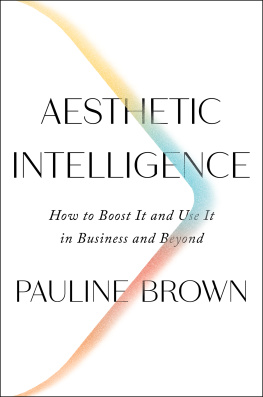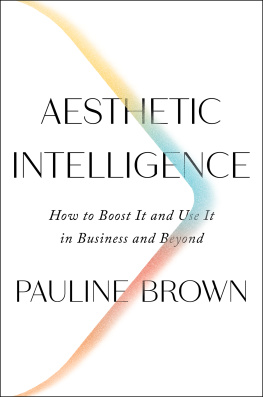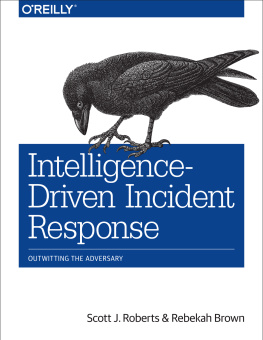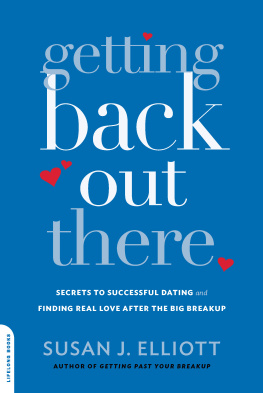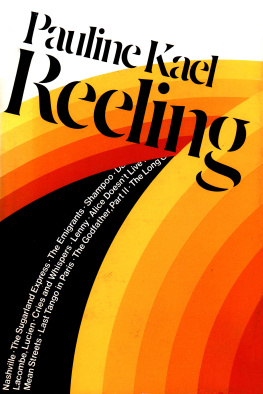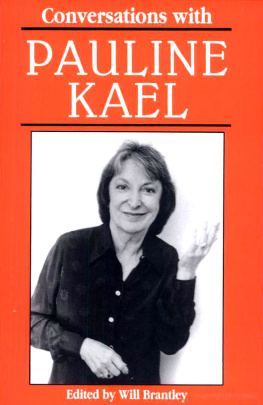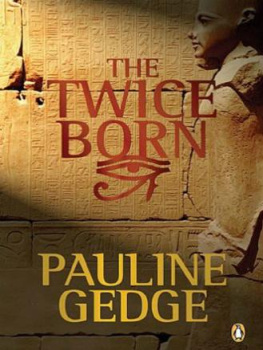Pauline Brown - Aesthetic Intelligence
Here you can read online Pauline Brown - Aesthetic Intelligence full text of the book (entire story) in english for free. Download pdf and epub, get meaning, cover and reviews about this ebook. year: 2019, publisher: HarperCollins, genre: Home and family. Description of the work, (preface) as well as reviews are available. Best literature library LitArk.com created for fans of good reading and offers a wide selection of genres:
Romance novel
Science fiction
Adventure
Detective
Science
History
Home and family
Prose
Art
Politics
Computer
Non-fiction
Religion
Business
Children
Humor
Choose a favorite category and find really read worthwhile books. Enjoy immersion in the world of imagination, feel the emotions of the characters or learn something new for yourself, make an fascinating discovery.
- Book:Aesthetic Intelligence
- Author:
- Publisher:HarperCollins
- Genre:
- Year:2019
- Rating:4 / 5
- Favourites:Add to favourites
- Your mark:
- 80
- 1
- 2
- 3
- 4
- 5
Aesthetic Intelligence: summary, description and annotation
We offer to read an annotation, description, summary or preface (depends on what the author of the book "Aesthetic Intelligence" wrote himself). If you haven't found the necessary information about the book — write in the comments, we will try to find it.
Aesthetic Intelligence — read online for free the complete book (whole text) full work
Below is the text of the book, divided by pages. System saving the place of the last page read, allows you to conveniently read the book "Aesthetic Intelligence" online for free, without having to search again every time where you left off. Put a bookmark, and you can go to the page where you finished reading at any time.
Font size:
Interval:
Bookmark:
To all the tastemakers out there:
May you continue to delight and inspire us.
And may you reap the rewards in business and beyond.
Aesthetics Matter
In late 2015, I met with Frances Frei, then senior associate dean for faculty planning and recruiting at Harvard Business School, to discuss my interest in teaching. At the time, I was the chairman of the North American division of the worlds leading luxury company, LVMH Mot HennessyLouis Vuitton. Based on my rsum, Frances assumed that a course on brand management, retailing, or luxury marketing would be in the offing. Maybe... except that the idea of teaching any of these topics made me bristle. Im not interested in merely passing on what Ive learned as an industry insider, I said. Id like to explore how my insights and experiences can be applied to other businesses. Frei seemed intrigued and asked me what the class would be called. The Business of Aesthetics, I blurted out. She lit up. I love it! As she started to jot it down, she looked up and said, I only have one question: How do you spell it? It came as no surprise, then, that the course I proposed would be a first for the university.
Within forty-eight hours, I received my teaching contract, and two months later, I officially joined the faculty at Harvardan extraordinary turnaround time for an academic institution. Graduate students welcomed the course. I was not altogether surprised by their level of interest. People, in general, hunger for new angles in business. The concept of aesthetic value is not normally associated with financial value. Yet, when I look back at my own careerfrom spearheading acquisitions for the Este Lauder Companies to setting strategy for Avon Products to investing in retail companies at The Carlyle Groupmy appreciation and understanding of aesthetics arguably contributed as much if not more to my professional success (and the success of the businesses I worked with) than did my Wharton MBA or rigorous analytic training at earlier employers such as Bain & Company.
This book is intended to bring that Harvard classroom to you. My goal is to show you how aesthetics can be used to unlock value and help businesses succeed. I also want to help you rediscover and refine your own personal aesthetic giftswhat I call aesthetic intelligence, or the other AI, and apply your AI to your own business in ways that will create and sustain financial value
If you see aesthetics as merely appealing to the superficiality of consumerism or the whims of fashion, please hear me out. Aesthetics is far more essential than thatit is a crucial element of business strategy. Businesses, both established and start-up, ought to take this proposition seriously.
In this book, I make four fundamental points: (1) aesthetics matter in business (and beyond); (2) aesthetic intelligence can be cultivated; in fact, each of us possesses far more capacity than we use; (3) aesthetic vision and leadership have the power to transform companies and even entire sectors; and (4) in the absence of aesthetics, most businesses are susceptible to potentially fatal challenges. In other words, when a companys aesthetics fail, so does the company.
Each chapter provides insights from case studies of companies that have used aesthetics to build market share, gain customer loyalty, and create lasting value. Though I rely on theory and science to explain the power of aesthetics, the stories of peoplethe business founders, entrepreneurs, and leadersand their companies are at the heart of this book. The case studies include dozens of profiles of companies and their leaders, many of whom I have had the good fortune to have worked with. Real-world examples, in which businesses aesthetic properties enhance or detract from their overall value, show how these principles work in real time.
I am also a pragmatist, so although I believe that each of us has the potential to boost our aesthetic intelligence, it takes time and effort. It is just like developing other muscles. To that end, Ive included approaches and concrete exercises for building your aesthetic muscles and using them to win over customers, starting with exercises for enhancing attunement, or developing a higher consciousness of your environment and the effect of its stimuli; interpretation, or translating your emotional reactions (both positive and negative) to sensorial stimuli into thoughts that form the basis of an aesthetic position, preference, or expression; articulation, or expressing the aesthetic ideals for your brand, product, or service such that team members not only grasp the vision but also can execute it with precision; and curation, or organizing, integrating, and editing a wide variety of inputs and ideals to achieve maximum impact. When it comes to aesthetics, editorial command is all-important; as Coco Chanel said, Elegance is refusal.
Though I am your guide or sensei in this book, I was not born with a particular knack for aesthetics. It took time to understand what was aesthetically appealing and why, and why aesthetics is so important in both business and life. The process of aesthetic discovery is not trivial. Creativity and taste are not things you can relegate to metrics and analytics. The process of developing the other AI is highly personal and qualitative. That makes it no less valuable. On the contrary, in an age in which most businesses have lost their raison dtre, I believe it is an imperative. After all, people do not need more stuff. But they do need opportunities to learn and discover, they need ways to express who they are and how they feel, and they need tools and inspiration to make themselves and the world more beautiful.
A pivotal moment in my own aesthetic evolution happened in 1976, when I was ten years old. I yearned for only three things in life: pierced ears, a puppy, and a Panasonic Take-N-Tape. I begged my parents for all of them, though getting any one of them would have made me deliriously happy. Ten years passed before I had my ears pierced and another thirty before I adopted my first-ever puppy. But for Chanukah of that bicentennial year, my parents gave me that coveted cassette recorder in electric blue.
The Take-N-Tape had an auratic power over me, with its lightweight yet sturdy design, its groovy curved edges, the shiny, glossy finish on the paint, the starlike speaker grooves in the upper right corner. Its bold, cheerful color coordinated well with my beloved and oft-worn polyester Adidas tracksuit. I marveled at the devices capacity to record my voice and play my Shaun Cassidy tapes. It could even receive AM/FM radio on the go, thanks to its dual capacity to work by battery or plug. Above all, I loved pressing the stubby black buttons: play, fast-forward, rewind, and especially record. I was the only one of my girlfriends who owned a Take-N-Tape. That enhanced my popularity and also served as leverage for playdates. My friends and I would spend hours listening to playbacks of our own voices. We were in awe of the power of technology.
I wasnt the only preteen who coveted that little wondrous machine; it was one of Panasonics most successful and iconic consumer product launches of that era. Though there were many other portable tape recorders on the market, none had the visual and emotional power of the Take-N-Tape. Looking back, I believe my passion for the product was based on its distinct and particular look and feel. That was one of the first of my many aesthetic epiphanies.
Growing up in a traditional European Jewish home (albeit in suburban New York), with cabinets full of curios and heirlooms from the Victorian Age, I found the machine all the more alluring for its pared-down Space Age design and its symbol of reinvention. Indeed, the Take-N-Tape perfectly captured its Japanese makers longtime design philosophy: to create provocative, bold, attractive designs with an emotional connection, by honing in on the essence and characteristics of the product.
Font size:
Interval:
Bookmark:
Similar books «Aesthetic Intelligence»
Look at similar books to Aesthetic Intelligence. We have selected literature similar in name and meaning in the hope of providing readers with more options to find new, interesting, not yet read works.
Discussion, reviews of the book Aesthetic Intelligence and just readers' own opinions. Leave your comments, write what you think about the work, its meaning or the main characters. Specify what exactly you liked and what you didn't like, and why you think so.

